67% of social advertisers consider Facebook to be the most effective social media platform they use.
At this point, it’s like Google Ads — it’s an essential part of any effective marketing strategy. There was a time when brands could acquire customers organically, but that era is over. Now Facebook is strictly pay-to-play, and advertisers need to go above and beyond boosting a post every so often.
Consider these stats:
- Although the average price for an ad had a 2% decrease, ad impressions grew by 34%
- There are 7 million advertisers on Facebook
- The average cost-per-click on Facebook is $1.72
- The potential reach of advertising for Facebook is 1.9 billion
In 2020, having a solid Facebook Ads plan — and using the right tools to execute it — is more important than ever. That’s why we rounded up the key trends that will impact running ads on Facebook this year.
Book My Free Marketing Consultation
5 Most Important Trends for Facebook Ads in 2020
Trend #1: Facebook Ad Costs Will Continue to Rise
Facebook Ads are still pretty affordable for most marketers, but costs are increasing steadily year over year, and many advertisers are justifiably worried.
Why do costs keep going up? It's a simple matter of supply and demand. Facebook currently has about 7 million advertisers, up from 4 million in 2016. But it hasn’t acquired new users to meet that growth, especially in the U.S. and Canada, where daily active users have been flat for a couple of years now.
As Statista shows, this year alone has seen no growth:
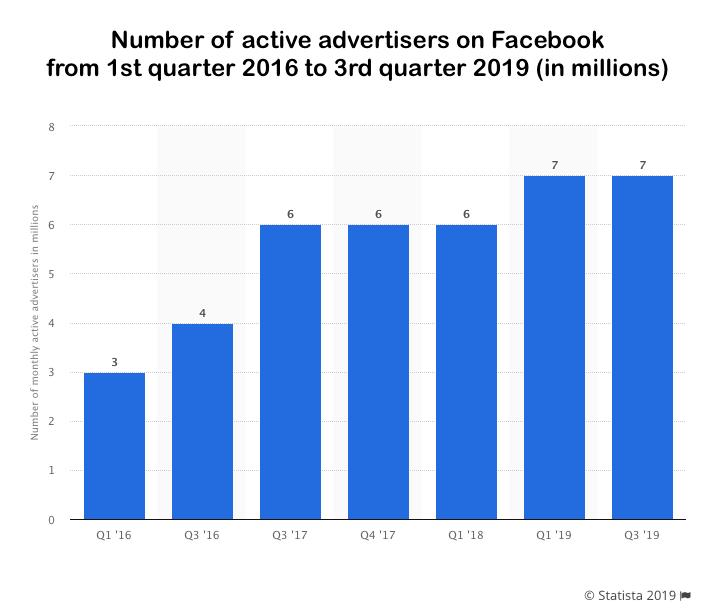
A study of 200 marketers spending $100K on Facebook during October 2019 shows that:
- CPMs on Facebook have grown 90% YoY for marketers, and that number only continues to grow.
- Rising costs are a concern for 85% of marketers, with 13% “extremely” concerned about it.
- That concern is exacerbated since 42% of marketers are spending more in 2019 than 2018.
- If costs continue to rise, 47% of marketers believe they could be priced out of paid Facebook advertising.
Expect this trend to continue in 2020, and to possibly be made worse by competition for eyeballs from political campaigns.
If you’re concerned about the affordability of Facebook Ads, weigh the cost of acquiring new customers against their lifetime value. You’ll probably find that you’re still getting your money’s worth.
Dive Deeper:
- 30 Winning Facebook Ads and Why They’re so Effective
- How to Get the Cheapest Facebook Ads Without Sacrificing Quality
- 11 Ways to Improve Your Facebook Ads Relevance Score
- 7 Easy Ways to Optimize Your Facebook Ads
Trend #2: AI, Automation & AR Will Be Used More
Facebook has been investing heavily in artificial intelligence (AI) to help improve the performance of advertising on the platform. Not all of the tools are there yet, but they are worth testing to see if they improve your ROI.
Here are some of the automation tools that are currently available for advertisers:
- Campaign Budget Optimization (CBO): With CBO, you set your budget at the campaign level, rather than the ad set level, and then Facebook uses that along with your bid strategy (lowest cost per action (CPA) or highest return on ad spend (ROAS)) to maximize your spend.
- Automatic Placements: Instead of selecting your placements, Facebook will choose them for you, running your ads on Instagram, Audience Network, and Messenger as well as Facebook and optimizing for cost.
- Dynamic Formats and Ad Creative: If you're using Dynamic Ads, this machine-learning option delivers a personalized version of the ad to everyone who sees it, based on which ad types they are most likely to respond to. It's available for the catalog sales, traffic, and conversions objectives. Facebook’s own testing of this ad type found an average of 34% improvement in incremental ROAS, 10% improvement in lift, and 6% lower cost per incremental purchase compared to carousel-only ads.
- Automatic Language Translation: For selected placements and languages, you can choose to have Facebook auto-translate your ad into the user’s preferred language. A caveat: Facebook doesn’t guarantee the quality of automatic translations, so you have to manually review each one.
- Multiple Text Optimization: This feature hasn’t been fully rolled out yet, but it’s available to some users and will initially be available for the traffic, app installs and conversions objectives. You can add five different options for the primary text, headline and description of your ads, and then Facebook will show different combinations of text to users based on what they’re most likely to respond to as identified by machine learning models.
Here are some examples for how you can vary your text with the multiple text optimization:
- Include pricing information that could prompt people to act:
Option 1: All-inclusive services available at low prices!
Option 2: All-inclusive services available for just $19.99!
- Add data to show your business value:
Option 1: Save money by calling us!
Option 2: 80% of new customers save money by calling us!
- Incorporate a quote from a review or testimonial:
Option 1: Our customers call our pizza the best pizza in Seattle.
Option 2: “Literally the best pizza in Seattle.” —Recent customer
Facebook also recently introduced Augmented Reality Ads, which allow users to do things like try on make-up or play games. In the United States, 63% of people have tried an AR experience from a brand, so there’s a huge opportunity there for advertisers on Facebook. For instance, WeMakeUp launched an AR Ad on Facebook that let people “test drive” their new shade of lipstick and saw a 27.6-point increase in purchases:
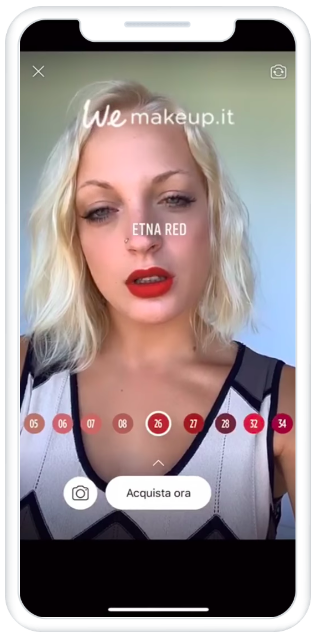
Facebook will be expanding Augmented Reality Ads for more advertisers, with a beta version going global this fall.
Dive Deeper:
- What Is Marketing Automation: Definition, Benefits & Uses
- 5 Trends that Will Define the New Vision of Marketing Automation
- What Is Post-Click Automation & Why Should Agencies Offer It as a Service?
- 4 Ways to Use Automation with Account-Based Marketing for Better Lead Nurturing
Trend #3: Mobile-first and Mobile Studio Will Be the Name of the Game
93% of Facebook's ad revenue comes from mobile advertising, which means: forget desktop if you’re a marketer — mobile-first is the way to go.
The biggest difference between mobile ads and desktop ads is what’s under the image. On desktop, there’s a headline and description, but on mobile, there’s just a URL and headline.
When writing copy for desktop, you need to avoid repetition in the primary text and description — for mobile, you need to make sure all the important info is in the primary text. You also have less real estate to work with on mobile before the “see more” prompt, so you need to hook the user in right away, like in this example:

Another must for Facebook mobile ads is a call-to-action (CTA) button. Ads without buttons result in fewer leads and a higher cost of acquisition. Test results show that not having a CTA button can increase the cost per lead by 2.5X, and any choice of CTA button worked better than having none at all:
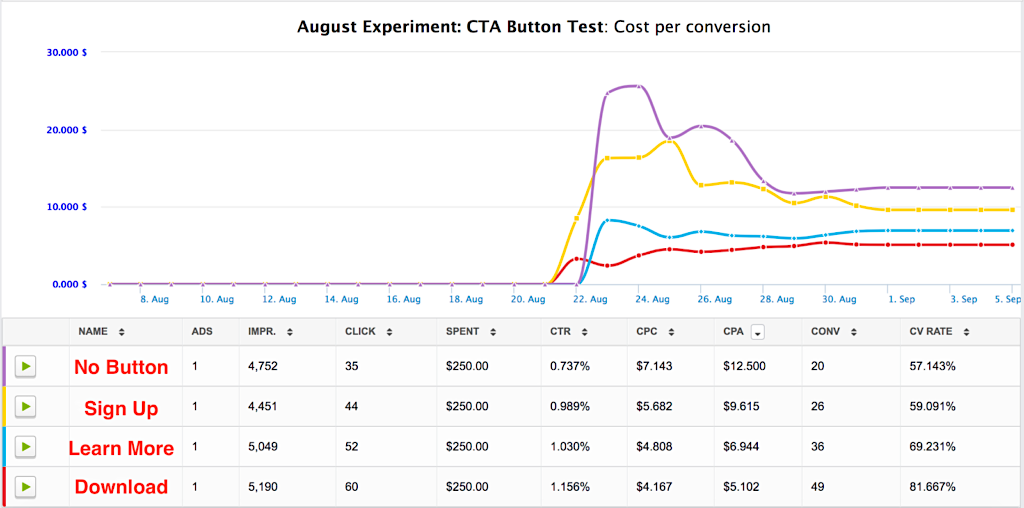
Facebook’s Mobile Studio allows you to create dynamic motion-driven mobile ads from your mobile phone in minutes:

This feature includes easy-to-follow video guides, a downloadable planning brief, and creative app recommendations for advertisers who are just getting started with mobile video ads or want to take their existing ones to the next level.
Dive Deeper:
- 12 Quick Fixes to Make Your Mobile Traffic Convert
- Mobile-First Indexing: Everything You Need to Prepare Your Site
Book My Free Marketing Consultation
Trend #4: From Facebook News Feed to Facebook Stories Ads
After over a decade of Facebook's News Feed being synonymous with the platform itself, Facebook is turning the focus to Stories.
When Facebook first launched Stories, a lot of people didn’t see the point. That’s what Snapchat and Instagram were for. But the numbers don’t lie: 500 million daily users are engaging with this feature.
Facebook Stories are full-screen photos, videos and posts that are only available for 24 hours. Photos play for five seconds, and 20 seconds of video is supported. Live videos disappear after you stop broadcasting. And comments and likes are only visible to the poster.
Facebook Stories Ads can be either mobile-shot or studio-shot, and Facebook recommends using a combination of both for campaigns, depending on your objectives: “Mobile-shot refers to creative that resemble organic Stories content, similar to the effect of using a mobile phone camera, or ‘selfie-mode.' Studio-shot appears to be of higher production value, more like traditional ads. Depending on your objective, strategies may vary”:

You can see that the version on the right is slick and looks like an ad, while the one on the left looks like it was taken on a phone by the person riding in the back of the boat. The difference in quality is hugely important to the amount of engagement the ad will receive.
Here are some stats for mobile vs. studio:
Mobile-shot:
- 78% more effective for ad recall
- 80% more effective for driving intent
- 84% more effective for viewing content
- 63% more effective for purchase, app install and checkout
Studio-shot:
- 97% more effective for brand awareness
As you can see, mobile-shot beats out studio-shot for every objective except for brand awareness, but the brand awareness advantage of studio-shot is too huge to ignore. Still, brands should let go of the idea that their Stories ads need to have high production value to be effective.
Facebook also offers poll stickers for Stories Ads, which create an interactive experience for users and help increase engagement. In fact, a case study for Dunkin’ showed that 20% of people who watched the ad voted in the poll, and the per-video view cost for ads with the polling sticker versus ads without was 20% lower:

Learn More:
- 30 Winning Facebook Ads and Why They’re so Effective
- A Simple Hack to Combine Facebook Ads and Google Ads
- How to Produce Paid Facebook Video Ads for Mobile Like a Pro
- 8 Tips for Successful Mobile Video Advertising
Trend #5: Video Will Continue to Be #1 for Engagement
Every day on Facebook, about 8 billion videos are viewed. Most of those views happen on mobile, so if you want to compete for eyeballs, you have to be creating mobile-first video ads.
The most important thing you need to know about video ads is that 85% of them are watched without sound. That means you need to include captions in your videos. You can automatically generate captions and edit them, write them yourself, or upload a SubRip (.srt) file that you can get from a service like Rev:
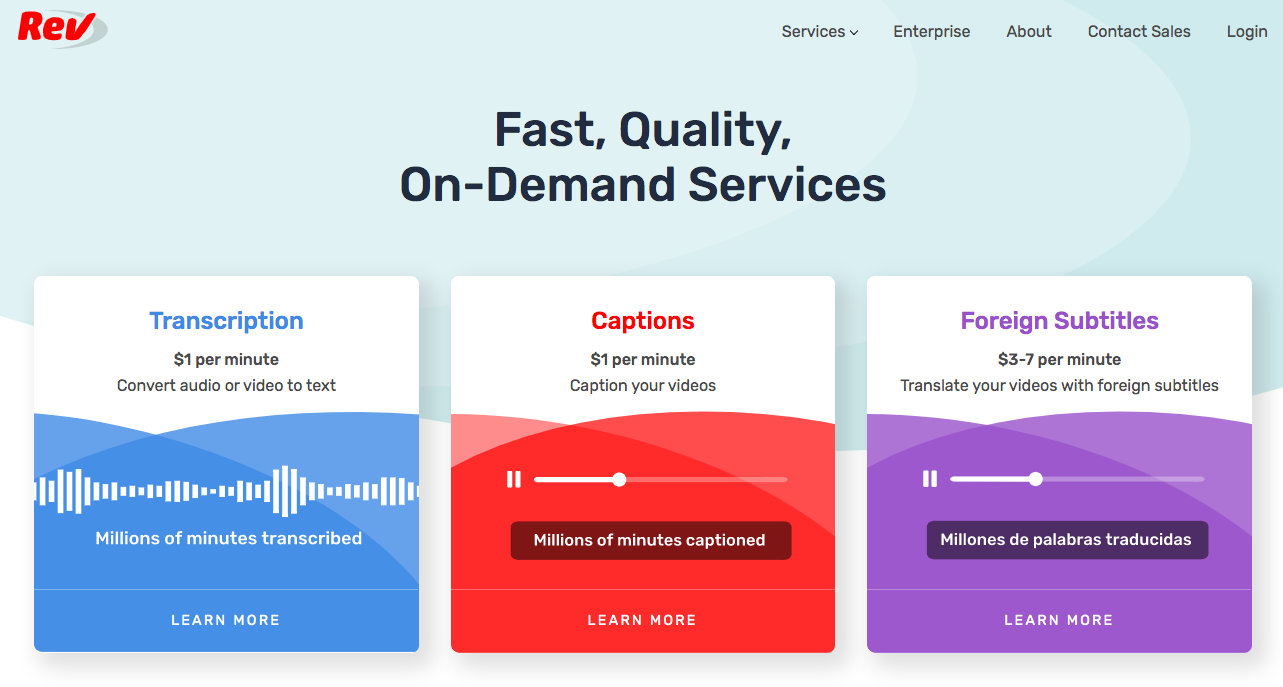
After your video ads run, you can use the results to create a video engagement custom audience from the people who engage with your videos. This will be really helpful for your next campaign, where you can create a lookalike audience based on those highly engaged people to find more potential leads.
Similar to Stories, video polls are also available to add an interactive element to your mobile videos and increase engagement:
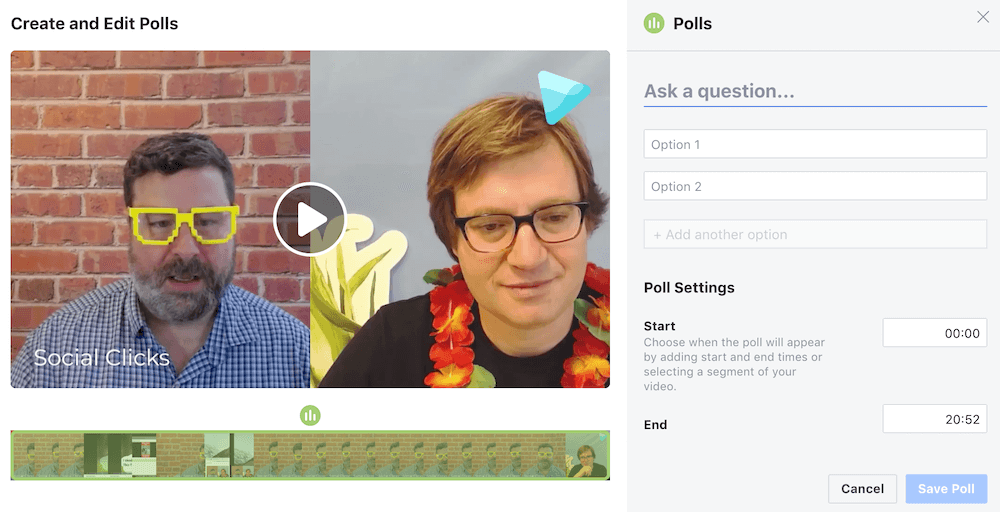
Whether your videos are running in Stories, the News Feed or elsewhere, video remains the best way to connect with current and potential customers. If it’s not already part of your marketing strategy, you should definitely invest in it for 2020!
Book My Free Marketing Consultation
Final Thoughts
Facebook Ads trends for 2020 will be both positive and negative.
The bad news is that Facebook wants brands to fork over money to receive value from its platform. That’s the bad news. It makes sense — if you’re a business, which Facebook very much is, you want to monetize whatever you can. But it's a major downer for companies that were able to achieve results organically before the big, bad algorithm change.
But the good news is that Facebook wants its advertisers to be successful so they can keep making that money. That means better tools to make ad campaigns more effective and give advertisers additional opportunities to connect with their target audience. It’s a win-win, even if it doesn’t always feel like it.
If you want to learn more about mastering digital marketing in 2020, read our epic guide to the 42 Digital Marketing Trends You Can’t Ignore in 2020.
The post 5 Facebook Ads Trends You Can’t Ignore in 2020 appeared first on Single Grain.
from Single Grain https://ift.tt/2M7Q8D4

No comments:
Post a Comment